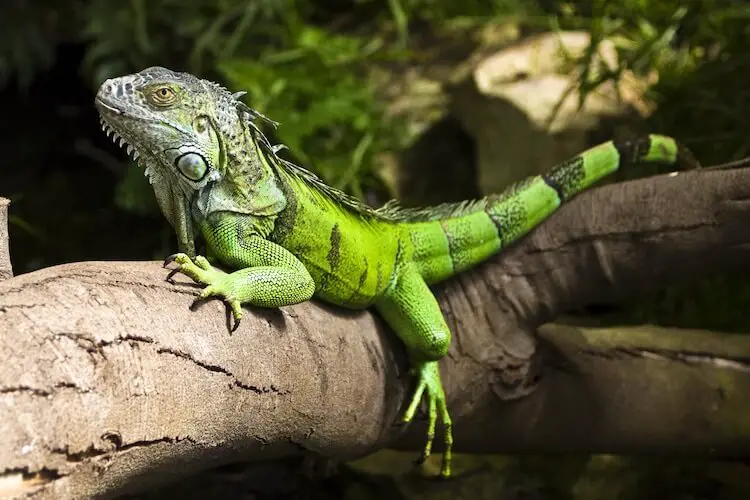
Description:
Scientific name: Iguana iguana
Life span: 12 years
The green iguana (Iguana iguana), commonly referred to as the American iguana or the common green iguana, is a sizable, arboreal species of lizard in the genus Iguana that mostly consumes plants. This creature is commonly referred to as an iguana.
Green iguanas are big lizards that are normally green, though occasionally they can be brown or nearly black in color. Depending on the season, some adults may have an orange or pink hue. Young green iguanas and hatchlings typically have brilliant green coloring.
Native Region/Habitat
The green iguana is native to southern Brazil, Paraguay, and as far north as Mexico. It has a wide geographic distribution.

Behavior:
Green iguanas try to escape from a predator by running or, if they are close to water, by jumping in and swimming away. The green iguana hisses and bobs its head in the direction of the attacker when confronted by a threat. It also stretches and displays the dewlap under its neck, stiffens and puffs up its body. The iguana may defend itself by biting, lashing with its tail, and using its claws. Uninjured prey are less likely to fight than the wounded.
When interacting with other iguanas or courting a potential mate, green iguanas use “head bobs” and dewlaps in a number of ways. Other iguanas interpret the frequency and quantity of head bobs in certain ways.
Predatory birds pursue green iguanas, and humans take advantage of this fear to trap them in the wild. By whistling or yelling, a hunter simulates the sound of a hawk, causing the iguana to freeze and making its capture simpler.
Care As a pet/In captivity:
Green Iguana Cage Size & Set Up: Based on their physical dimensions, you should choose the proper cage size for your iguana. First, gauge the length of your iguana. Their enclosure should be twice this long, equally wide, and six feet high:
- Custom screens or wooden vision cages for tanks.
- Minimum tank dimensions are 4 x 6 x 6 feet.
- UVB lighting is necessary.
For adults, use dirt or mulch made from cypress trees.
In order for their bodies to manufacture vitamin D, which aids in calcium absorption, green iguanas must be kept in environments that range in temperature from 79 °F (26 °C) to 95 °F (35 °C). If they are not, they may develop a fatal metabolic bone disease.
Diet: This species has a greater metabolism than many other reptiles because they love to climb. They frequently graze all day to keep their energy levels up. Iguanas are herbivorous in the wild. They eat a wide range of different plants and flowers. You ought to give your iguana a range of leafy greens, both light and dark.
Iguanas of all ages need to be fed 1-2 times each day. Consider serving larger servings if your iguana consumes their salad rapidly or isn’t maintaining or gaining weight.
Table





